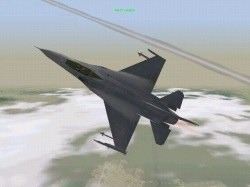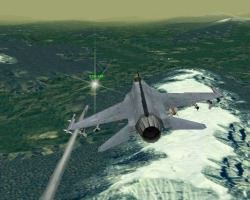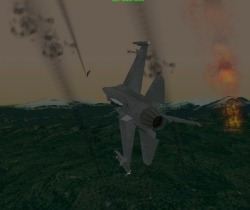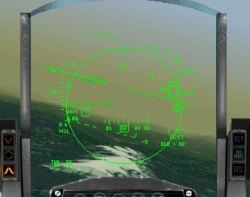| Falcon 4 Interview: Missiles and Detection by Leonard "Viking1" Hjalmarson |
||||
|
Falcon 4.0 represents the current state of the art in military flight simulations for the PC. In almost every area of modeling: flight, weapons, ground war, radar and detection systems, communications and campaign dynamics - a new level of realism has been achieved. A simulation of this complexity inevitably creates a unique set of challenges for the virtual pilot. First, it becomes easy to misconstrue an inexplicable event as a bug. Many players have questioned the "Mission Aborted" call, wondering whether in fact the frequency of aborted missions is a bug. Closer observation, however, reveals that, like the domino theory, one event is inevitably connected to another in the complex and unfolding virtual universe of Falcon 4. For example, a strike package will be aborted when the SEAD mission that precedes it fails. A strike package will also abort if ordered by AWACS to attack a higher priority threat. Following this AWACS call can quickly exhaust the package's A2A stores and left with only heavy A2G weapons the package will abort.  But if the dynamics of mission planning seem complex, how much more so the intelligence behind weapon guidance and detection systems. To help us understand the action behind the surface events we see, we spoke to Leon Rosenshein, one of the Lead Engineers working on F4 AI. The Interview In Robert Shaw's classic Fighter Combat he discusses the various methods missiles employ for guidance from the shooter (launching aircraft) to the target. Proportional navigation is what causes the characteristic 'wiggle' one sees when a Sidewinder guides to its target. Is this form of guidance present in Falcon 4? Leon: The first missile I modeled was the Sidewinder. As in real life, the Sidewinder's control surfaces steer either right or left, with no in-between. As a result, it does adjust its course proportionally and you will see this "wiggle." What are the factors that impact missile targeting? Leon: Missile modeling is broken into four components: flight model, seeker, guidance, and warhead. The flight model has a full 6 degrees of freedom, just as it does for the aircraft in Falcon 4, and the missile is affected by all the same forces as the aircraft. Even the weight of fuel affects missile flight.  |
 Leon: Other than these considerations of fuel and battery power, a multiband infrared seeker is influenced by the strength of the IR signature it detects. So the target speed, aspect and current throttle setting are important. A missile launched nose on will have a lower probability of kill. If the target aircraft has afterburners lit, the probability of kill is higher. We also model aerodynamic heating and atmospheric issues. So, if your aricraft is travelling at mach 1.5 you will present a missile seeker with a higher IR cross section. If you fly above the clouds and the IR seeker is below the clouds, detection is impossible because the cloud masks your heat signature. In the same way, anti-aircraft systems that use optical guidance won't be much use against you if you are shielded by clouds. Some players have raised the question of whether the Archer missile is travelling too fast in Falcon 4? Leon: I'm looking at this at the moment and so far I haven't found any strange behaviors. The general complaint is that a player hears the call, "Archer inbound" and then there is the explosion. I have found that these bandits are taking very close range shots. When the launcher is a mile distant, you will have very little reaction time.  Leon: Two other types are modeled: Beam Riders like the AIM 7 guide on a radar reflection. We also model Command Guided systems like the ALAMO Charlie and the AMRAAM. The AMRAAM switches to active guidance near the end of its flight, with its onboard radar taking over guidance. What AI factors influence the probability of kill for a particular missile? 7 Leon: The amount of damage the missile can do is a function of its closest proximity. When the missile determines it is at its closest proximity to the target, the warhead detonates. If this happens at the rear of the target aircraft, there is a good chance of engine damage. If at the front, there is a high probability of radar damage. Of course, if the closest point is still not very near the airframe the probability of damage is reduced. Go to Part II |
|||
|
This material is copyrighted and may not be reprinted in any form without permission of the publisher. Last Updated March 2nd, 1999 |
||||

